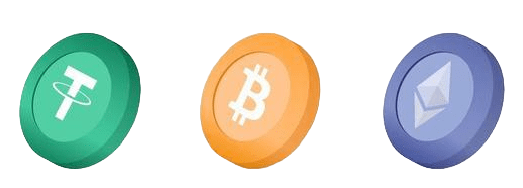However, not all commodities are reproducible nor were all commodities originally intended to be sold in the market. Prior to Marx, many economists debated as to what elements made up exchange value. The other part of the value of this particular commodity was labour that was not paid to the worker—unpaid labour. This unpaid labour was retained by the owner of the means of production. In capitalist society, the capitalist owns the means of production and therefore the unpaid labour is retained by the capitalist as rent or as profit.
Their prices are driven by the constantly changing supply and demand of each. This page covers the types of traditional raw commodities, other https://www.dowjonesanalysis.com/ commodity types, and how the commodity market works. Commodities markets are where tangible goods and contracts based on them are traded.
- ETFs provide more diversification and lower risks, while futures are more speculative, and the risks are higher especially when margin is used.
- Like other classes of assets such as stocks, commodities have value and can be traded on open markets.
- There is a spectrum of commoditization, rather than a binary distinction of “commodity versus differentiable product”.
- Many online financial portals will provide some indication of certain commodities prices such as gold and crude oil.
This cycle eventually peaked in 1951 and faded away in the early 70s.[30] In the 1970s as world economies grew they needed more materials and energy to support expansion leading to increases in prices across the board. Workers moved into cities as emerging industries took off and offered a lots of new jobs and opportunities. In 2008 when the Great Recession hit it put a halt onto the supercycle as GDP’s across the world tanked leaving many economies in recessions. All three of the above-mentioned economists rejected the theory that labour composed 100% of the exchange value of any commodity. In varying degrees, these economists turned to supply and demand to establish the price of commodities.
US traders welcome at these brokers:
The means of production means the site where the commodity is made, the raw products that are used in the production and the instruments or machines that are used for the production of the commodity. Commodities are basic goods and materials that are widely used and are not meaningfully differentiated from one another. Examples of commodities include barrels of oils, bushels of wheat, or megawatt-hours of electricity. Commodities have long been an important part of commerce, but in recent decades, commodities trading has become increasingly standardized.
Onions were traded on commodities markets in the United States until 1955, when Vince Kosuga, a New York farmer, and Sam Siegel, his business partner tried to corner the market. Kosuga and Siegel flooded the market, made millions, and consumers and producers were outraged. Congress outlawed the trading of onion futures in 1958 with the Onion Futures Act. In the U.S., the CFTC regulates commodity futures and options markets. The CFTC is legally called on to promote competitive, efficient, and transparent markets that help protect consumers from fraud and other unscrupulous practices.
Types of Commodity Markets
Brokers act as third-party middlemen who create a market to connect buyers and sellers, for which they charge a set of fees as compensation. ETFs provide more diversification and lower risks, while futures are more speculative, and the risks are higher especially when margin is used. Technological revolutions transformed the industry as computerized and eventually network-driven trading became the norm. In 2008, the financial crisis and the tripling in price of wheat futures gave rise to calls for further regulations.
In the U.S., much of the trading is done at the Chicago Board of Trade or the New York Mercantile Exchange, although some trading is also done on the stock markets. These markets establish trading standards and units of measure for commodities, making them easy to trade. Corn contracts, for example, are for 5,000 bushels of corn, and the price is set in cents per bushel. Natural gas is too expensive to ship worldwide, unlike oil, making it difficult to set prices globally.
Trading has also become more sophisticated with the advent of exchanges and derivatives markets. Exchanges regulate and standardize commodity trading, allowing for liquid and efficient markets. There have been four super cycles over the last 120 years worldwide.[29] The first commodity super cycle started in late 1890 and was accelerated on the back of widespread U.S. industrialization and World War 1. In 1917 commodity prices peaked and then entered a downtrend to the 1930s. As war erupted in Europe in the late 1930s and eventually including the U.S. the world saw a new cycle begin. Countries were not just preparing for war but also the Aftermath of World War II as lots of Europe and Asia faced heavy rebuilding.
Yet, alongside and within these markets, there is a parallel world of financial commodity markets. Instead, they enter into trade agreements on the future prices of these goods through contracts known as forwards, which were standardized into futures and options in the 19th century. These financial markets don’t directly handle the commodities themselves—though a trader may be on the hook for delivering them in the future—but enable trading in interchangeable agreements in regulated exchanges.
A commodity trader may be a private individual, known as a retail trader, or a member of an institutional organization. Certain commodities, such as precious metals, are considered a hedge against inflation, and a broad set of commodities as an alternative asset class can help diversify a portfolio. Because the prices of commodities tend https://www.investorynews.com/ to move in opposition to stocks, some investors also rely on commodities during periods of market volatility. Many futures markets are very liquid and have a high degree of daily range and volatility, making them very tempting markets for intraday traders. Many index futures are used by brokerages and portfolio managers to offset risk.
Popular in Wordplay
For instance, you might buy or sell a physical product, hedge parts of your portfolio, speculate on changing commodity prices, or arbitrage across markets. These regulatory attempts laid bare the fundamental tension in commodity markets. How to rein in excessive speculation and shut down manipulative practices while allowing these markets to facilitate legitimate trade and price discovery? As an independent body, the CFTC inherited the oversight duties outlined in the heavily amended CEA. However, it encountered a growing universe of complex financial products, including options, foreign currency futures, and the mushrooming interest rate derivatives market.
Words Nearby commodity
Besides his extensive derivative trading expertise, Adam is an expert in economics and behavioral finance. Adam received his master’s in economics from The New School for Social Research and his Ph.D. from the University of Wisconsin-Madison in sociology. He is a CFA charterholder as well as holding FINRA Series 7, 55 & 63 licenses. He currently researches and teaches economic sociology and the social studies of finance at the Hebrew University in Jerusalem. There is a spectrum of commoditization, rather than a binary distinction of “commodity versus differentiable product”.
Second, it is uniform in quality between companies that produce and sell it. The main ways to buy and sell commodities are physically or via derivatives contracts, like futures. There are also month codes to identify when the futures contract expires. For example, ‘ZCK1‘ is a corn futures contract on the CME, expiring in May. A commodity is a base material, a raw good that can be traded for another.
That same year, the New York Board of Trade merged with Intercontinental Exchange (ICE), forming ICE Futures U.S. In 2008, the CME acquired the New York Mercantile Exchange (NYMEX) and the Commodity Exchange Inc. Each exchange offers a wide range of global benchmarks across major asset classes. Commodities traders buy and sell either physical (spot) commodities or derivatives contracts that use a physical commodity as its underlying. Depending on what type of trader you are, you will use this market for different purposes.
Since 2019, they’ve charged 21 individuals at major banks and trading firms, including JPMorgan Chase & Co. and Deutsche Bank AG, who admitted to wrongdoing, with the companies paying over $1 billion in penalties. A commodity market is where you can buy and https://www.topforexnews.org/ sell goods taken from the earth, from cattle to gold, oil to oranges, and orange juice to wheat. Commodities can be turned into products like baked goods, gasoline, or high-end jewelry, which in turn are bought and sold by consumers and other businesses.



